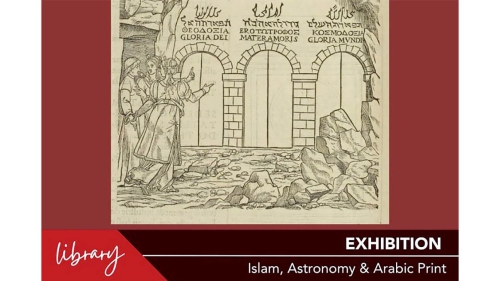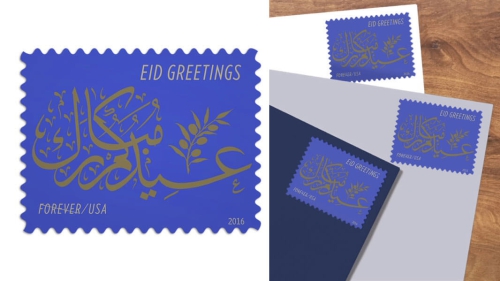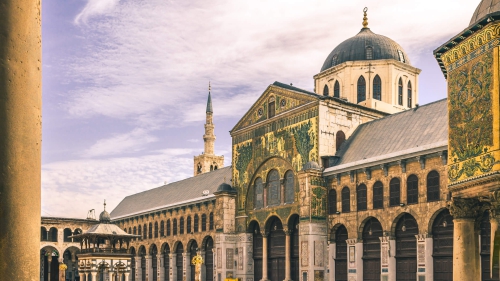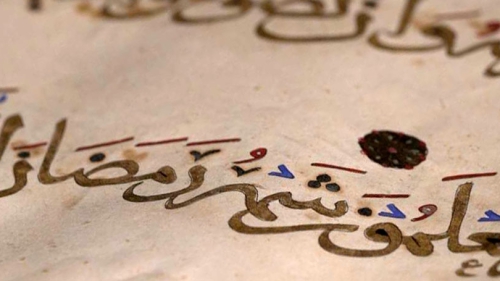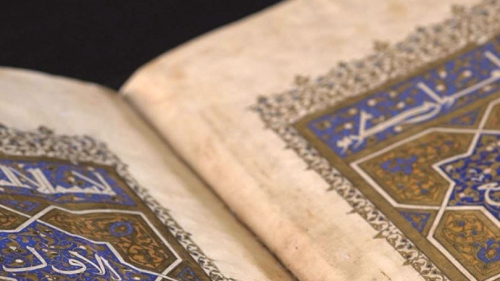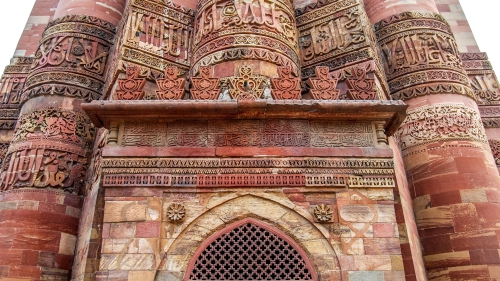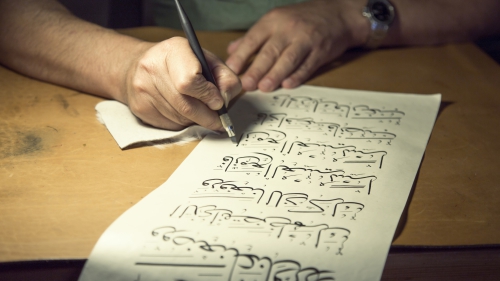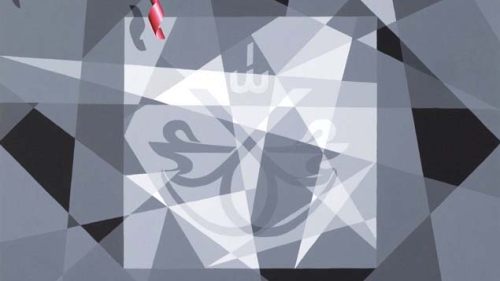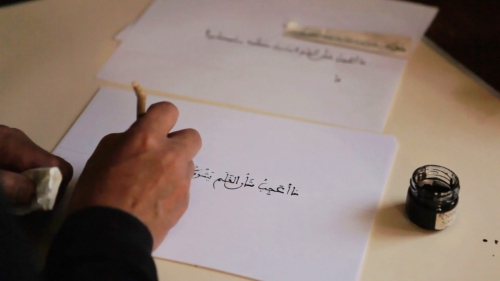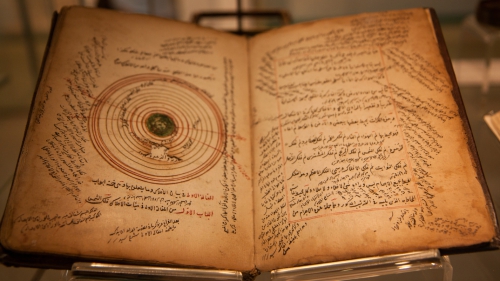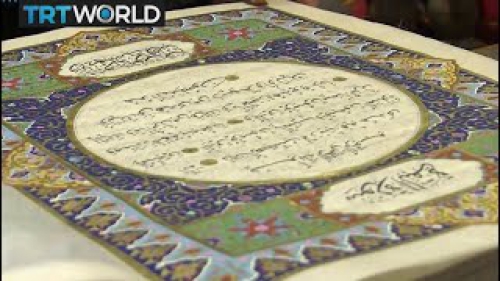Arabic Writing
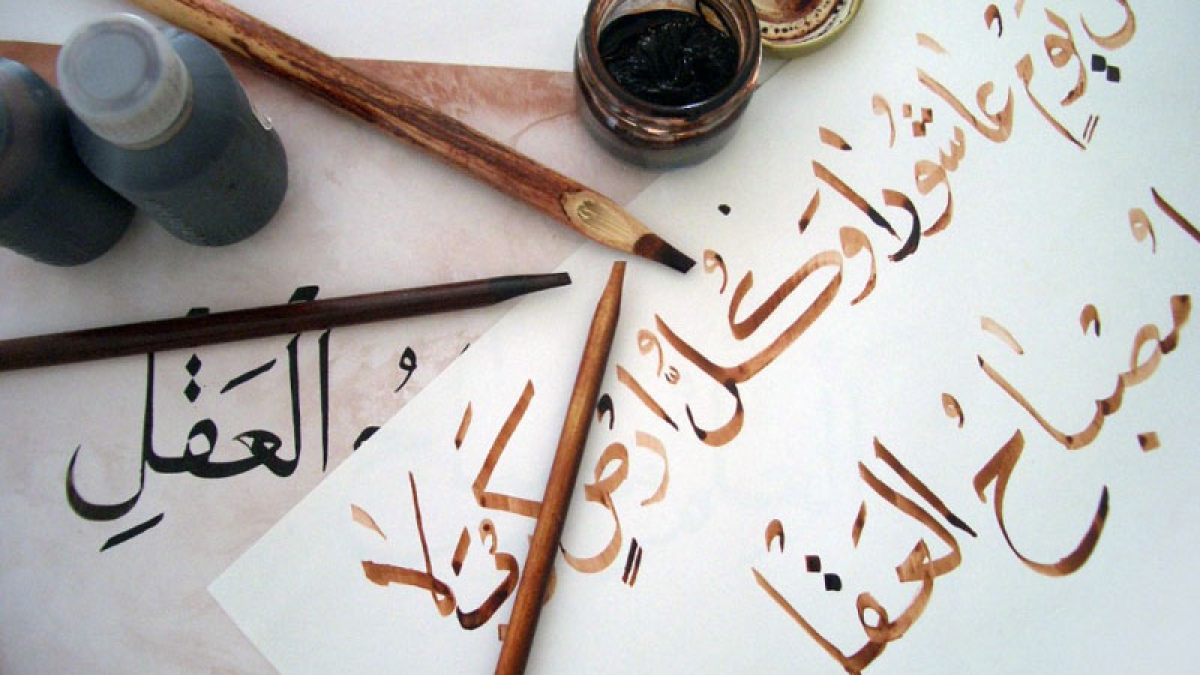
The Arabs gave to a large part of the world not only a religion - Islam - but also a language and an alphabet. Where the Muslim religion went, the Arabic language and Arabic writing also went. Arabic became and has remained the national language - the mother tongue - of North Africa and all the Arab countries of the Middle East.
Even where Arabic did not become the national language, it became the language of religion wherever Islam became established, since the Quran is written in Arabic, the Profession of Faith is to be spoken in Arabic, and five times daily the practicing Muslim must say his prayers in Arabic. Today, therefore, one can hear Arabic spoken - at least for religious purposes - from Mauritania on the Atlantic, across Africa and most of Asia, and as far east as Indonesia and the Philippines. Even in China (which has a Muslim population of some forty million) and the Central Asian republics of the CIS (ex-USSR), Arabic can be heard in the shahadah, in prayer, and in the chanting of the Quran.
Of those people who embraced Islam but did not adopt Arabic as their everyday language, many millions have taken the Arabic alphabet for their own, so that today one sees the Arabic script used to write languages that have no basic etymological connection with Arabic. The languages of Iran, Afghanistan, and Pakistan are all written in the Arabic alphabet, as was the language of Turkey until some fifty years ago. It is also used in Kashmir and in some places in the Malay Peninsula and the East Indies, and in Africa it is used in Somalia and down the east coast as far south as Tanzania.
 Photo: The basmalah ("In the name of God the Merciful the Compassionate" - the opening words of the Quran) is here done in an elaborate thuluth script with the letters joined so that the entire phrase is written without lifting the pen from the paper.
Photo: The basmalah ("In the name of God the Merciful the Compassionate" - the opening words of the Quran) is here done in an elaborate thuluth script with the letters joined so that the entire phrase is written without lifting the pen from the paper.
It is generally accepted that the Arabic alphabet developed from the script used for Nabataean, a dialect of Aramaic used in northern Arabia and what is now Jordan during roughly the thousand years before the start of the Islamic era. It seems apparent that Syriac also had some influence on its development. The earliest inscription that has been found that is identifiably Arabic is one in Sinai that dates from about A.D. 300. Another Semitic script which was in use at about the same time and which is found on inscriptions in southern Arabia is the origin of the alphabet now used for Amharic, the official language of Ethiopia.
The Arabic alphabet has twenty-eight letters (additional letters have been added to serve the needs of non-Arabic languages that use the Arabic script, such as those of Iran and Pakistan), and each of the letters may have up to four different forms. All of the letters are strictly speaking consonants, and unlike the Roman alphabet used for English and most European languages Arabic writing goes from right to left.
Another significant difference is that the Arabic script has been used much more extensively for decoration and as a means of artistic expression. This is not to say that the Roman alphabet (and others such as the Chinese and Japanese, for instance) are not just as decorative and have not been used just as imaginatively. Since the invention of printing from type, however, calligraphy (which means, literally "beautiful writing") has come to be used in English and the other European languages only for special documents and on special occasions and has declined to the status of a relatively minor art.
 Photo: Another basmalah in ornamental thuluth script is written in the shape of an oval.
Photo: Another basmalah in ornamental thuluth script is written in the shape of an oval.
In the countries that use the Arabic alphabet, on the other hand, calligraphy has continued to be used not only on important documents but for a variety of other artistic purposes as well. One reason is that the cursive nature of the Arabic script and certain of its other peculiarities made its adaptation to printing difficult and delayed the introduction of the printing press, so that the Arab world continued for some centuries after the time of Gutenberg to rely on handwriting for the production of books (especially the Quran) and of legal and other documents. The use of Arabic script has therefore tended to develop in the direction of calligraphy and the development of artistically pleasing forms of hand lettering, while in the West the trend has been toward printing and the development of ornamental and sometimes elaborate type faces.
Another and perhaps more important reason was a religious one. The Quran nowhere prohibits the representation of humans or animals in drawings, or paintings, but as Islam expanded in its early years it inherited some of the prejudices against visual art of this kind that had already taken root in the Middle East. In addition, the early Muslims tended to oppose figural art (and in some cases all art) as distracting the community from the worship of God and hostile to the strictly unitarian religion preached by Muhammad, and all four of the schools of Islamic law banned the use of images and, declared that the painter of animate figures would be damned on the Day of Judgment. Wherever artistic ornamentation and decoration were required, therefore, Muslim artists, forbidden to depict, human or animal forms, for the most part were forced to resort either to what has since come to be known as "arabesque" (designs based on strictly geometrical forms or patterns of leaves and flowers) or, very often, to calligraphy. Arabic calligraphy therefore came to be used not only in producing copies of the Quran (its first and for many centuries its most important use), but also for all kinds of other artistic purposes as well on porcelain and metalware, for carpets and other textiles, on coins, and as architectural ornament (primarily on mosques and tombs but also, especially in later years, on other buildings as well).
 Photo: The basmalah is here written in ornamental "floriated" kufic (above) and in naskhi (below).
Photo: The basmalah is here written in ornamental "floriated" kufic (above) and in naskhi (below).
At the start of the Islamic era two types of script seem to have been in use - both derived from different forms of the Nabataean, alphabet. One was square and angular and was called kufic (after the town of Kufa in Iraq, though it was in use well before the town was founded). It was used for the first, handwritten copies of the Quran, and for architectural decoration in the earliest years of the Islamic Empire. The other, called naskhi, was more rounded and cursive and was used for letters, business documents, and wherever speed rather than elaborate formalism was needed. By the twelfth century kufic was obsolete as a working script except for special uses and in northwest Africa, where it developed into the maghribi style of writing still used in the area today. Naskhi, the rounded script, remained in use and from it most of the many later styles of Arabic calligraphy have been developed.
![]() Photo: The ruq'ah script is used for headlines and titles and is the everyday written script of most of the Arab world.
Photo: The ruq'ah script is used for headlines and titles and is the everyday written script of most of the Arab world.
Calligraphy flourished during the Umayyad era in Damascus. During this period scribes began the modification of the original thick and heavy kufic script into the form employed today for decorative purposes, as well as developing a number of new scripts derived from the more cursive naskhi. It was under the 'Abbasids, however, that calligraphy first began to be systematized. In the first half of the tenth century the 'Abbasid vizier Ibn Muqlah completed the development of kufic, established some of the rules of shape and proportion that have been followed by calligraphers since his time, and was first to develop what became the traditional classification of Arabic writing into the "six styles" of cursive script: naskhi (from which most present day printing types are derived), thuluth (a more cursive outgrowth of naskhi), rayhani (a more ornate version of thuluth), muhaqqaq (a bold script with sweeping diagonal flourishes), tawqi' (a somewhat compressed variety of thuluth in which all the letters are sometimes joined to each other), and ruq'ah (the style commonly used today for ordinary handwriting in most of the Arab world). It was from these six, and from kufic, that later calligraphers, not only in the Arab world but in Iran, Turkey, and elsewhere as well, developed and elaborated other scripts.
![]() Photo: The graceful Persian ta'liq script is used in a sentence which starts "Beauty is a spell which casts its splendor upon the universe..."
Photo: The graceful Persian ta'liq script is used in a sentence which starts "Beauty is a spell which casts its splendor upon the universe..."
In Iran, for example, there came into use a particularly graceful and delicate script called ta'liq, in which the horizontal strokes of the letters are elongated and which is often written at an angle across the page. From ta'liq, in turn, another script called nasta'liq was derived which combines the Arabic naskhi and the Persian tailiq into a beautifully light and legible script.
 Photo: The diwani script (top) and the so called "royal" diwani (below) were developed by Ottoman calligraphers for use on state documents.
Photo: The diwani script (top) and the so called "royal" diwani (below) were developed by Ottoman calligraphers for use on state documents.
It was in Ottoman Turkey, however, that calligraphy attained the highest development once the early creative flowering had faded elsewhere in the Middle East. So renowned were Ottoman calligraphers, in fact, that a popular saying was that "The Quran was revealed in Mecca, recited in Egypt, and written in Istanbul." The Ottomans were not content merely to improve and develop the types of script that they inherited from the Arabs and Persians but also added a number of new styles to the calligrapher's repertoire.
One important addition by the Ottoman calligraphers was the script called diwani, so called from the word diwan (meaning state council or government office) since it was at first used primarily for documents issued by the Ottoman Council of State. It is an extremely graceful and very decorative script, with strong diagonal flourishes, though less easy to read than some other styles. After its development in Turkey, it spread to the Arab countries and is in use today for formal documents and also as architectural decoration.
 Photo: This tughra (monogram or insignia) of the Ottoman Sultan Abdu Hamid shows the three elongated vertical strokes which are characteristic of this style.
Photo: This tughra (monogram or insignia) of the Ottoman Sultan Abdu Hamid shows the three elongated vertical strokes which are characteristic of this style.
Examples of more or less standard types of script such as these do not by any means exhaust the number of styles. Islamic calligraphers have experimented endlessly and have been extremely imaginative. Another distinctive Turkish contribution is the tughra, an elaborate and highly stylized rendering of the names of the Ottoman sultan, originally used to authenticate imperial decrees. The tughra later came to be used both in Turkey and by rulers of t the Arab countries as a kind of royal insignia or emblem, on coins and stamps and wherever a coat of arms or royal monogram would be used by European governments.
 Photo: In the muthanna or "doubled" style of calligraphy shown on the left each half of the design is a mirror image of the other. The basmalah in the thuluth script on the right has been written in the shape of an ostrich.
Photo: In the muthanna or "doubled" style of calligraphy shown on the left each half of the design is a mirror image of the other. The basmalah in the thuluth script on the right has been written in the shape of an ostrich.
Another unusual variation of calligraphy, not often used nowadays, is the style called muthanna (Arabic for "doubled"). This is not really a type of script in itself but consists of a text in one of the standard scripts such as naskhi worked into a pattern in which one half is a mirror image of the other. Even more imaginative is what may be called pictorial calligraphy, in which the text (usually the profession of faith, a verse from the Quran, or some other e phrase with religious significance) is written in the shape of a bird, animal, tree, boat, or other object. A Quranic verse in the kufic script, for example, may be written so that it forms the picture of a mosque and minarets.
 Photo: The angular kufic script is here used to put a well known religious expression into the form of a mosque with four minarets.
Photo: The angular kufic script is here used to put a well known religious expression into the form of a mosque with four minarets.
The art of calligraphy is still very much alive in the Arab world and wherever the Arabic alphabet is used. The list of everyday uses is almost endless: coins and paper money bear the work of expert calligraphers, wall posters and advertising signs in every town show the calligrapher's art, as do the cover and title page of every book, and the major headlines in every newspaper and magazine have been written by hand. Calligraphy - the art of "beautiful writing" -continues to be something that is not only highly prized as ornament and decoration but is immensely practical and useful as well.

Photo: Preeminent among artists of the Muslim world is the calligrapher, as it is his privilege to adorn the word of God. Here ornamental kufic is used on a Quranic page that typifies the marriage of calligraphy and illumination, an art that reached its zenith in the fourteenth century.

Photo: Cursive script on a section of gold-embroidered kiswah, the black cloth covering of the Ka'bah, which is renewed each year at the time of the pilgrimage.

Photo: Miniature from the Shah-Nameh (Book of Kings), illustrating the epic of Persian poet Firdausi.

Photo: The cursive script shown in detail from a fourteenth-century Persian tile.

Photo: A fourteenth-century manuscript of a pharmaceutical text.

Photo: Cursive script on Quran stand of wood, dated 1360, a fine example of Mongol art from western Turkestan.






